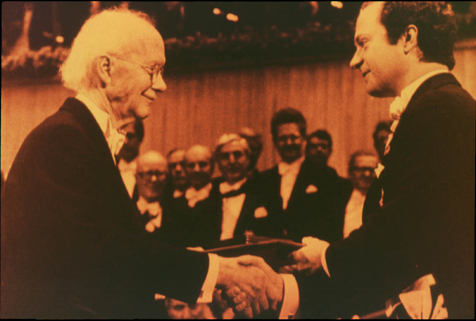
Faculty Research 1980 - 1989
Differential genetic requirements for in vivo and in vitro induction of T-killer and T-suppressor cells in the mutant H-2Kb system and the cross-reactivity of the T-killer clones.
Document Type
Article
Publication Date
1987
Keywords
Clone-Cells, Cross-Reactions, Cytotoxicity-Immunologic", H-2-Antigens, Immunity-Cellular, Lymphocyte-Culture-Test-Mixed", Mice, Mice-Inbred-BALB-C", Mice-Inbred-C57BL", Mice-Inbred-CBA", Mutation, T-Lymphocytes-Cytotoxic, T-Lymphocytes-Suppressor-Effector
First Page
211
Last Page
221
JAX Source
Exp Clin Immunogent 1987; 4(4):211-21.
Abstract
Differences in the generation of anti-H-2Kb wild-type specific cytotoxic T lymphocytes (CTL) and specific suppressor T cells (SSTC) were investigated in H-2Kbm mutant mouse strains. To this end, optimal conditions for in" vivo induction of highly active CTL in this mutant system were found and the T-cell origin of CTL and SSTC was confirmed using the anti-Thy-1.2 monoclonal antibody G4. Unlike the CTL, which were generated in vivo by" any of the mutant strains tested (bm1, bm3, and bm4), the SSTC were only" produced by bm3, whose H-2Kbm3 antigen, in contrast to the other H-2Kbm" molecules, differs from wild type by serologically defined determinants." The high activity of anti-wild type bm4 CTL induced in vivo contrasted with a low activity of such CTL induced in mixed lymphocyte culture (MLC). This appeared to be the property of bm4 only, but not of bm1 or bm3, and" it was reproduced in the reciprocal system B10 anti-bm4. CTL generation could be restored in the MLC by the addition of concanavalin A supernate or a mixture of bm4 and bm12 stimulator cells. Three of the six in vivo induced and in vitro propagated bm3 anti-B6 CTL clones demonstrated selective cross-reactivity to only one of the third-party H-2K molecules used, either Kk, Kd, or Kbm4. The present results indicate that (a) the" SSTC and antibody recognize similar H-2Kb epitopes; (b) the H-2Kb epitopes recognized by the CTL and SSTC are not identical; (c) the genetic control of CTL generation in vivo is distinct from that in MLC, and (d) the" affinities of antigen-specific receptors on T-cell clones of the same specificity may be different, leading to their individual cross-reactivity patterns.
Recommended Citation
Brondz BD,
Kahn ES,
Chervonsky AV,
Isakova VR,
Apasov SG,
Blandova ZK.
Differential genetic requirements for in vivo and in vitro induction of T-killer and T-suppressor cells in the mutant H-2Kb system and the cross-reactivity of the T-killer clones. Exp Clin Immunogent 1987; 4(4):211-21.

